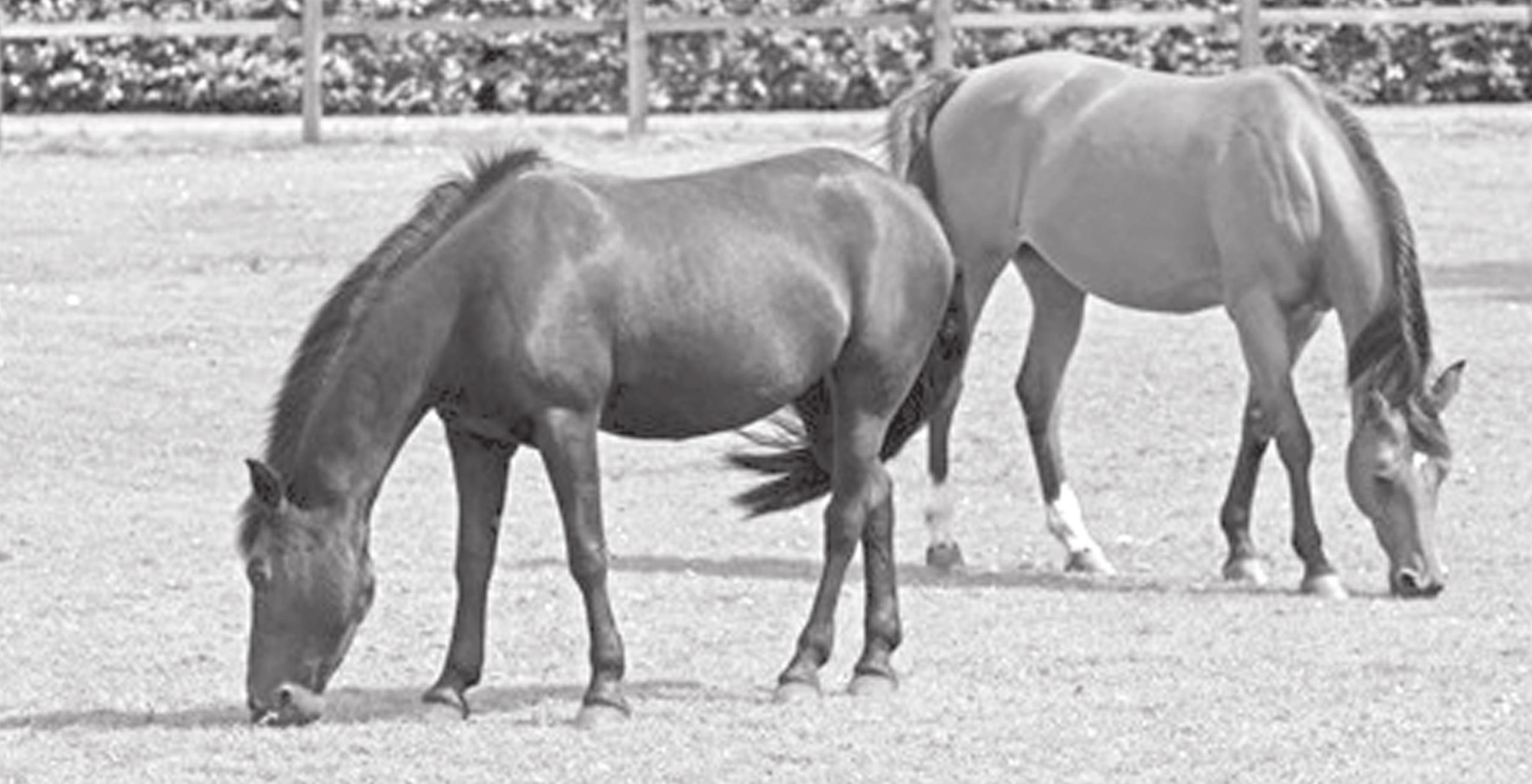Some horses in a narrow region of Texas have developed a condition known as nasopharyngeal cicatrix, which causes scarring of the upper airway.
Researchers believe this disease is the result of an environmental agent, but no one knows for sure what causes it or why it is so localized.
Dr. Canaan Whitfield, an assistant professor of large animal surgery at the Texas A&M College of Veterinary Medicine & Biomedical Sciences who has seen many horses with this condition, explains some of the symptoms horse owners can watch out for.
“Symptoms are variable and depend on the stage and severity of disease,” Whitfield said. “In early stages, you might see nasal discharge, coughing, difficulty swallowing, and other similar signs.”
He compared the early stages of nasopharyngeal cicatrix to pharyngitis, commonly known as a sore throat, in humans.
Because these early symptoms are mild, they often go unnoticed by owners; however, nasopharyngeal cicatrix is progressive and if not caught early, it can lead to serious health issues.
“Once the early stages have passed, scar tissue begins to form,” Whitfield explained. “This scar tissue can be small and cause no signs or it can be large and start to obstruct airflow.”
He said if airflow is obstructed, owners may hear a strange noise when the horse is breathing, especially when it is exercising.
If the scarring becomes severe enough, the horse will eventually become unable to breathe.
Nasopharyngeal cicatrix is most commonly seen in Central and Southeast Texas, according to Dr. Michelle Coleman, an assistant professor of large animal internal medicine at the CVM.
Whitfield and Coleman see multiple horses with this disease every week at the Texas A&M Large Animal Hospital.
They said it is often diagnosed as an incidental finding when horses are being seen for other health concerns.
The mystery of this disease is that the cause is still unknown, despite all the research that has been done. According to Whitfield, most of this research was done by Dr. Tracy Norman, a former CVM internal medicine specialist.
“She showed that horses that live exclusively outside are more at risk, as compared with horses that are stalled for significant amounts of time,” Whitfield said. “This suggests to me that the cause is environmental and likely something in the pasture.
“Beyond that, we really do not know,” he said. “We are looking at various fungal and bacterial causes but have not yet nailed down the culprit.”
Unfortunately, because the cause is unknown, there is not an effective prevention strategy or treatment method for nasopharyngeal cicatrix.
Whitfield said that many products — including antifungal vaccines, antimicrobials, and anti inflammatory drugs — have been used in an attempt to treat the disease, but none have been proven successful.
Coleman said the only option for horses with severe cases is a permanent tracheostomy, a procedure in which the horse is given an alternative airway through the trachea.
Reducing pasture time may help lessen the chance that a horse will get nasopharyngeal cicatrix, but this can lead to other problems such as sand ingestion and colic, according to Whitfield.
Nasopharyngeal cicatrix may be causing problems now, but Whitfield believes a cure will be found in the near future. He said determining the cause of the disease is the key to finding a way to treat it.
“Once we know the cause we can develop effective prevention strategies,” he said. “It is going to take time and money but I think we can get there.”
While researchers work toward understanding the cause and developing a treatment, horse owners can help protect their horses by keeping up with regular veterinary check-ups, watching for early symptoms, and developing a plan for health emergencies.
Pet Talk is a service of the Texas A&M College of Veterinary Medicine & Biomedical Sciences. Stories can be viewed on the web at vetmed.tamu.edu/pettalk. Suggestions for future topics may be directed to editor@cvm.tamu.edu


